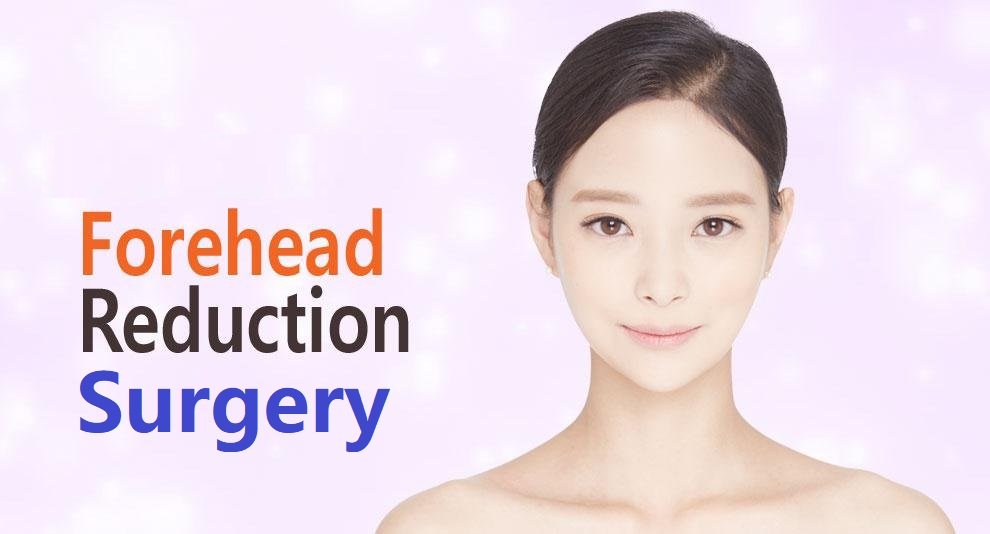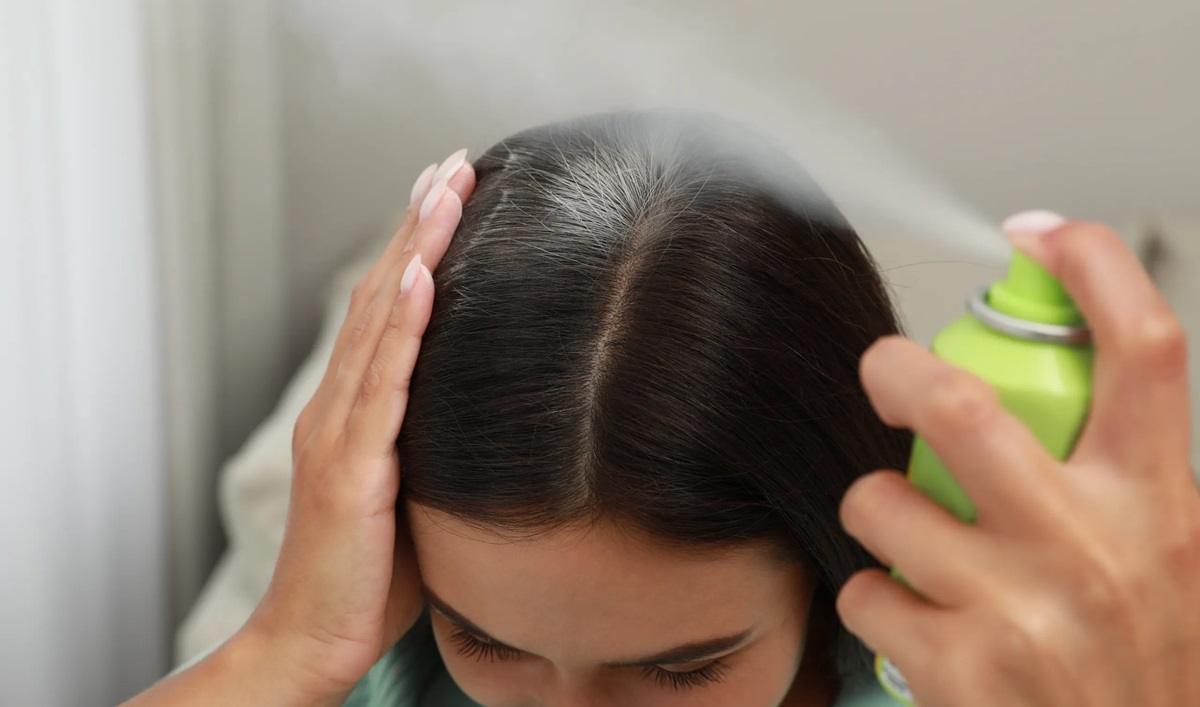
A large or protruding forehead can make some people feel self-conscious about their appearance. While bangs or hairstyles can help cover or camouflage a large forehead, some individuals opt for a more permanent solution – forehead reduction surgery.
Forehead reduction, also known as foreheadplasty or hairline lowering surgery, is a cosmetic procedure that aims to reduce the height of the forehead and create better proportions between the forehead and the rest of the face. This surgery has grown in popularity in recent years as more patients seek cosmetic enhancements to address concerns about having a disproportionately large or protruding forehead.
If you have considered forehead reduction to improve the size and shape of your forehead, this guide covers everything you need to know about the benefits, procedural steps, recovery, results, and costs for forehead reduction in 2024.
Overview of Forehead Reduction Surgery
Forehead reduction surgery is a cosmetic procedure that reduces the vertical height of the forehead by surgically altering the position of the hairline and eyebrows. It is also commonly referred to as foreheadplasty or hairline lowering surgery.
This surgery aims to:
- Lower the hairline to reduce the height of the forehead.
- Reposition the eyebrows for a more proportional look.
- Smooth out any irregularities on the forehead skin.
Forehead reduction is often sought by those who feel:
- Their forehead is too tall or wide.
- Their facial proportions are imbalanced due to a large forehead.
- Their eyebrows are positioned too high.
The procedure can help bring the eyebrows and hairline into better symmetry with the rest of the facial features. Many patients feel forehead reduction gives a more balanced and feminine appearance.
Forehead reduction is considered a major plastic surgery procedure, as it involves making incisions across the entire forehead and scalp area. However, when performed by a skilled surgeon, patients can enjoy permanent results from a single surgery with minimal scarring.
Benefits of Forehead Reduction Surgery
Several aesthetic benefits can be achieved from forehead reduction surgery:
Reduces Excessive Forehead Height
The main goal of forehead reduction is to lower the height of the forehead which many patients perceive as too tall or large in proportion to their face. Restoring balance and proportion between the forehead and other facial features is the primary aim.
Lowers Hairline
Incisions made across the forehead and behind the hairline allow the surgeon to remove segments of skin and manipulate the scalp tissue to lower the frontal hairline. This can reduce the appearance of a high forehead and receding hairline in one procedure.
Repositions Eyebrows
In many cases, a hairline-lowering procedure is combined with a brow lift to reposition the eyebrows. This gives a more youthful arched shape to the brows for better symmetry with the eyes and proportions of the face.
Creates Smooth, Taut Skin
As excess forehead skin is removed, the remaining skin is redraped for a smoother, tighter fit across the forehead. This eliminates wrinkles and creases on the forehead skin for a rejuvenated appearance.
Boosts Self-Confidence
Patients with a disproportionately large or wide forehead often feel self-conscious about their appearance. By surgically modifying the size and shape of the forehead, many patients experience a surge in self-esteem and confidence after surgery. The facial balance adds harmony that was lacking previously.
Permanent, Natural-Looking Results
Unlike non-surgical treatments which require ongoing maintenance, forehead reduction surgery produces permanent results with a single procedure. In the hands of a skilled surgeon, foreheadplasty outcomes look highly natural and proportional.
Good Candidates for Forehead Reduction
The best candidates for forehead reduction surgery are:
- Those in overall good health without any uncontrolled medical conditions.
- Individuals bothered by a disproportionately tall, wide, or protruding forehead.
- People with deep horizontal creases on their forehead skin.
- Those with a high hairline appear to be receding.
- Individuals wanting to permanently reduce excessive forehead height.
- Patients with reasonable cosmetic goals and motives for forehead reduction.
Forehead reduction can successfully be performed on both men and women. Good candidates should not be actively smoking before or after surgery due to impaired healing.
It’s advisable to wait until the late teens or early adulthood when the skull bones have fully matured before considering forehead reduction surgery. This allows the surgeon to better predict postoperative forehead height and shape.
Forehead Reduction Surgery Techniques
There are a few surgical techniques that may be used to perform forehead reduction surgery:
Coronal Incision Technique
This technique involves making an incision along the coronal plane – from ear to ear across the top of the head behind the hairline. Through this long incision, the surgeon can fully visualize and access the forehead and brows to perform the reduction and lifting procedures.
While the coronal lift provides the most exposure, it does leave a lengthy scar that may be visible when the hair is pulled back. It also carries a longer recovery time.
Hairline Incision Technique
Shorter incisions are made along the frontal hairline from temple to temple. The surgeon works through these smaller incisions to remove tissue and lower the hairline.
While the hairline scar is more concealed, it does limit exposure and the extent of reduction possible in one procedure.
Endoscopic Technique
With the endoscopic method, several short incisions are made at the front, side, and back of the scalp. An endoscope is inserted through the incisions allowing the surgeon to visualize the deeper forehead tissues. This is a minimally invasive option with hidden scarring.
However, the endoscopic technique may not enable as dramatic a reduction compared to the open coronal lift method.
What to Expect During Forehead Reduction Surgery
Forehead reduction surgery is performed under general anesthesia or IV sedation with local anesthesia. The typical steps include:
- The patient is prepped for surgery and anesthetized.
- Incisions are created based on the chosen technique – coronal, hairline, or endoscopic.
- For a coronal incision, the scalp tissue is lifted to expose the forehead bone and eyebrow muscles.
- Forehead skin and soft tissue are meticulously trimmed and sculpted by the surgeon.
- The hairline is lowered and repositioned for a more proportional size and arch shape.
- Excess skin is excised and the remaining skin is carefully redraped over the reduced forehead structure.
- Stitches close the incisions and temporary metal screws or staples may support the new forehead position during healing.
- Binding compression dressings or wrappings are applied over the scalp and forehead.
Depending on the extent of reduction, repositioning of the facial nerves and tissues required, and whether an eye lift is also performed, the total surgery time ranges from 2 to 4 hours.
Recovering from Forehead Reduction Surgery
It takes time and care to fully recover from significant plastic surgery on the forehead area. Here’s what to expect:
- First week– Swelling and bruising peaks by the 3rd day. Pain and discomfort are managed with medication. Facial movements and exertion should be avoided. Cold compresses can help reduce swelling. Keep dressings dry.
- Second week– Stitches removed around 10 days. Swelling and discoloration start improving. The surgeon approves the return to light activities. A compression bandage was worn to continue minimizing swelling.
- Third – Fourth week– Most patients feel comfortable to return to non-strenuous work by 2- 3 weeks. Bruising and swelling mostly resolved. Numbness in the scalp area slowly dissipates.
- Second month– By week 8, the last of the bruising has healed. Most patients feel comfortable socially by this time. Strenuous exercise and activity should still be avoided.
- Third month– Nearing the end of the recovery phase. The swelling has further subsided to reveal more refined contours. Sensation has normalized. Patients are cleared for all regular activities.
- Six months– Optimal results are evident by 6 months after forehead reduction surgery. The last of the swelling has normalized to showcase the balanced facial proportions. Small adjustments can still occur for up to a year.
Closely following your surgeon’s postoperative directions can promote smoother healing and recovery after forehead reduction.
Results of Forehead Reduction Surgery
Forehead reduction produces permanent results that can:
- Decrease the vertical height of your forehead by several centimeters immediately.
- Lower your frontal hairline to reduce the gap between your hairline and brows.
- Lift and arch your eyebrows into a more alert, feminine shape.
- Remove horizontal creases and smooth out wrinkles on the forehead.
- Create better balance and proportions between your eyes, nose, lips, and forehead size.
- Boost facial harmony and attractiveness through a smaller forehead.
In the final results at 6 months, your forehead will take on a natural-looking size and shape in proportion to the rest of your facial attributes. Scarring is discreet, hidden within the hairline.
While the vertical reduction achieved is permanent, it’s important to have realistic expectations about the final forehead size. Swelling in the first months after surgery can temporarily make the forehead appear even smaller before subtly relaxing to the final proportions.
Also Read: What Happens if Coconut Oil Gets in Your Eyes? Benefits of Coconut Oil
Cost of Forehead Reduction Surgery
Just like other cosmetic procedures, the cost of forehead reduction surgery can vary based on factors like:
- Surgeon– A top plastic surgeon who exclusively performs facial procedures may charge more. Surgeon fees typically range from $4000 – $10,000.
- Technique– A more complex technique like a coronal lift costs more than an endoscopic approach.
- Extent of Surgery– Procedures combined with forehead reduction like a brow lift will increase overall fees.
- Anesthesia & Facility Fees– Charges for anesthesia and operating room/surgery center costs. These typically add $1000 – $2000.
- Location– Where you live plays a role. Large metro areas have higher charges.
- Revision Surgery– A second operation to revise or adjust initial results will cost extra.
Overall, the average cost for forehead reduction surgery is $5000 – $15000 in 2024. This is a general estimation of the surgeon fee, facility fee, and anesthesia which comprise the total costs.
Revisions, facility charges, or a more extensive procedure could bring your total costs towards the higher end. Many plastic surgeons offer financing plans to help offset the costs.
Finding a Surgeon for Forehead Reduction
Undergoing forehead reduction surgery requires an extensive search for the right cosmetic surgeon. Tips when looking for a qualified surgeon include:
- Review their before and after photos to assess their aesthetic skills and results.
- Verify they are board-certified in plastic surgery. Look for members of the American Board of Plastic Surgery or the American Board of Facial Plastic and Reconstructive Surgery.
- Select a surgeon who regularly performs forehead and brow lift surgeries. Ask how many they do annually.
- Schedule an in-person surgical consultation to evaluate your candidacy. Be sure the surgeon listens to your goals.
- Ensure they operate at an accredited surgical facility versus an office-based location.
- Ask about what technology and techniques they utilize to ensure the best results.
Take your time researching properly qualified plastic surgeons. Be sure to feel confident they can deliver the reduction and rebalancing you want for a harmonized forehead and facial profile.
Maintenance and Long-Term Results After Surgery
To maintain your optimal results from foreheadplasty long-term:
- Follow your surgeon’s instructions for healing, recovery, and scar care.
- Avoid rubbing, bumping, or trauma to the forehead during the initial months after surgery.
- Once cleared to resume activities, take care with high-impact exercises where falling or equipment could hit the face. Use proper form and control.
- Wear sunscreen daily and protective headwear to avoid UV damage to incision sites.
- Adhere to any instructions given for scar massage, silicone sheeting, or topicals to minimize scarring.
- Maintain a stable, healthy weight. Major weight fluctuations can distort surgical results.
- Plan annual follow-up visits with your surgeon to check your results and forehead symmetry. Small revisions may optimize the outcomes years later if needed.
With proper care and maintenance, patients can enjoy permanent, aesthetically pleasing forehead reduction results for years following surgery.
Frequently Asked Questions About Forehead Reduction
How long do forehead reduction results last?
Forehead reduction produces permanent changes in the forehead height and structure. As long as you maintain a stable weight and protect your facial tissues, the aesthetic improvements and balance created by foreheadplasty can last a lifetime.
Is forehead reduction painful?
There is moderate pain, swelling, and bruising typically after invasive surgery on the forehead and scalp. Your surgeon will provide pain medication and instructions to maximize comfort during recovery. Any lingering discomfort usually resolves within several weeks.
Does forehead reduction leave scars?
Incisions are placed strategically within the hairline whenever possible for the most discreet scarring. In experienced hands, forehead reduction scars fade and are hidden by your hair once it regrows through the incisions. Ask your surgeon about scar optimization techniques.
How much shorter can forehead reduction make my forehead?
The amount of height reduced depends on factors like existing forehead height, elasticity of your tissues, and surgical plan. In general, surgeons aim to conservatively reduce excessive forehead height by several centimeters to achieve natural, proportionate results.
Does eyebrow position change with forehead reduction?
Often a brow lift is incorporated with forehead reduction to reposition and arch the eyebrows. Elevating the brows helps balance and frame the eyes, coordinating with the new forehead and hairline position.
When can I resume normal activities after forehead reduction?
You should limit physical exertion and sun exposure for the first ~6 weeks after surgery. By 2-3 months most swelling has resolved allowing return to social interactions. Strenuous activities like sports can resume around 3 months. All regular activities are permitted for 6 months.
Will my hairline look natural after being lowered?
A skilled surgeon takes care to create and angle your revised hairline in a natural shape that complements your facial structure. As the hair continues growing, the hairline seamlessly blends for completely natural results.
Can I combine forehead reduction with other procedures?
Yes, forehead reduction is commonly performed along with other facial surgeries like a facelift, eyelid lift, nose reshaping, or fat transfer procedures in a single-stage surgery. Combining procedures can reduce costs while allowing comprehensive facial rejuvenation.
Conclusion: Is Forehead Reduction Right for You?
Forehead reduction offers men and women troubled by an oversized or disproportionate forehead the chance to correct this issue for improved facial balance and self-confidence.
This procedure aesthetically reduces excess vertical forehead height while creating better proportions between your hairline, brows, and other facial features. Forehead reduction can be performed safely and effectively in the hands of a specialist plastic surgeon.
If you are bothered by a large forehead and wish to permanently modify your forehead size in harmony with the rest of your face, a consultation with a board-certified cosmetic surgeon can determine if you may benefit from forehead reduction surgery. With realistic expectations about the reduction achievable and proper aftercare, foreheadplasty can give you the forehead profile you desire.
Mustafa Al Mahmud is a passionate medical writer and health enthusiast. He is excited to share his knowledge and make reliable health information more accessible through Quick Medico. Mustafa aims to write about common diseases, medications, wellness topics, and the latest health research in easy-to-understand language. He believes clear and accurate health communication empowers readers to take charge of their well-being. In his free time, Mustafa enjoys hiking, cooking, and spending time with his family.



